Ancient Worlds, Part 2: Ultima Online
25 years later, the iconic first generation MMO is still grinding on
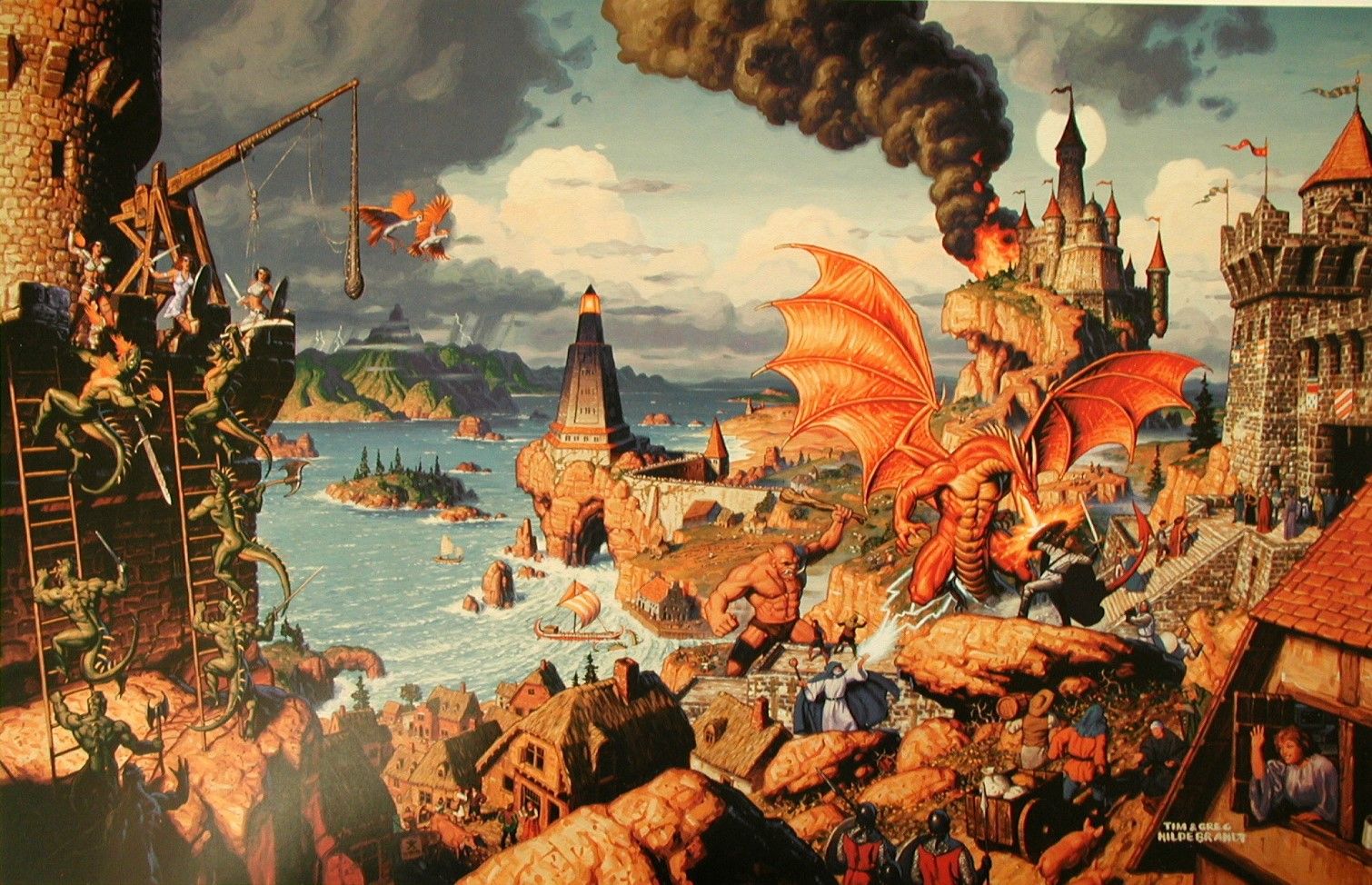
No game better defined the MMORPG genre than Ultima Online — quite literally, in fact. Richard “Lord British” Garriott, creator of the Ultima series, allegedly coined the term “MMORPG” in 1997 (like much of gaming history, this is shrouded in ambiguity). They had previously been referred to by several different names, most commonly “graphical MUD”, an evolution of the “Multi-User Domain” term that emerged after Beyond Software’s Neverwinter Nights (1991) added a visual element to the historically text-based MUDs of the '70s and '80s.
Three months after its September 1997 release, Ultima Online had achieved 70,000 subscribers, and by December 1998 it was recognised by the Guinness Book of World Records for being the first MMORPG to reach 100,000 players. Numbers continued to rise into the early 2000s — in October 2000, CNET Gamecenter reported that Ultima Online had reached 250,000 subscribers. This would be Ultima Online’s peak popularity.
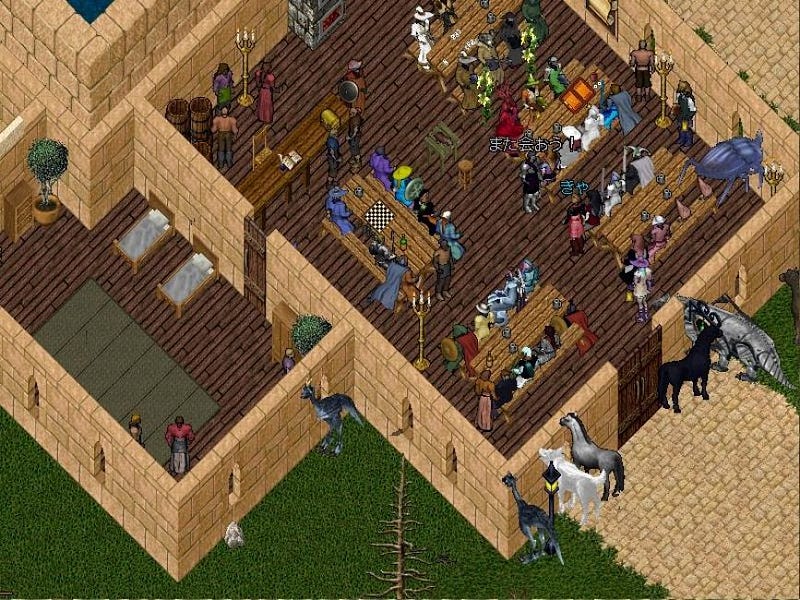
As the core business of MMO games is to provide vast, vibrant and populated worlds, specific player numbers are often difficult to come by, particularly when an MMO game is past its prime. Slate reported in 2003 that Ultima Online still maintained 225,000 subscribers, but reported numbers are scarce after that. What is certain, however, is that by the time the third generation of MMOs began in 2004 (most notably with World of Warcraft), Ultima Online was experiencing a steady decline. Electronic Arts had closed Origin Systems in February 2004, leaving Ultima Online without a developer. In 2006, EA handed development responsibility over to Dark Age of Camelot developer Mythic Entertainment. According to MMOGChart.com, by April 2008, Ultima Online’s market share was less than 0.06% (around 75,000 players), compared with World of Warcraft’s 62%. Ultima Online was one of many MMOs being trampled by Blizzard’s behemoth.
Mythic didn’t just sit on the title and do nothing — they continued to develop and expand the game, releasing the Kingdom Reborn client with updated graphics and later, the Stygian Abyss expansion that added new zones, mechanics and a new map. The development team switched again in 2014, this time to newly founded EA studio Broadsword. They too continued to expand Ultima Online content, producing several content and map expansions, and supporting servers (known in Ultima Online parlance as “shards”) with regular in-game events.
When so many other MMOs, even second and third generation ones, have shut down due to dwindling populations or financial problems, you would be forgiven for thinking that Ultima Online could disappear any day now. Yet it endures, and in some respects, has a richer and more diverse community than ever.

Ultima Online today
I reached out to Broadsword with a few questions about the state of Ultima Online in 2021. While they stated that they do not provide any details of subscriber numbers (standard MMO industry policy), a short time in the various Ultima Online Discord channels is proof that there is still an active and vibrant player community.
One of the big questions I aim to answer in this series of articles is what it is that keeps these classic MMOs alive and kicking. The games industry is an industry that revolves around tech and trends, and often, if a game isn’t using the latest graphics technology or isn’t part of a current genre trend, then its lifespan can be pretty short. Ultima Online is a game running an engine that is essentially 25+ years old, and it uses some very archaic design that is decades behind current trends — yet it endures. As I mentioned in Part 1, however, what largely defines MMOs is their sense of community.
To get a sense of what makes Ultima Online’s community tick, I contacted the current dev team at Broadsword, and some of the playerbase on Discord. One of those players is Wes Locher, author of Braving Britannia, a pair of books compiling the experiences and stories of UO players throughout the game’s history. His books provide valuable insight into what it is that makes Ultima Online tick. Here’s my interview with Wes:
Source: YouTube.
One thing that really stood out in my chat with Wes was his initial motivations for entering the game — coming from a small, isolated town, Ultima Online was in many ways a gateway to the wider world; a glimpse of humanity beyond our narrow, localised bubble. MMOs predated social media — the largest MMO of all time, World of Warcraft, launched in 2004, before most people had even heard of Facebook. Ultima Online, and other MMOs of its generation, were a glimpse of the impending “global village” we live in today.
The rise of social media, and other communication platforms like Discord, have had mixed impacts on MMO communities. As Wes notes, social media provides people with the best chances they have of reconnecting with old friends and players — assuming that you know the real person behind the character. See, before the existence of social media, linked accounts, and so on, there really was almost no way to validate who it was you were speaking to. A person’s online persona was their character, and that persona could change from game to game. That still exists today to a degree, especially if you’re security conscious, but it is becoming increasingly difficult to remain anonymous online.
While researching his book, Wes noted that today’s UO community is incredibly welcoming — something that I could mostly corroborate from my own research. Every player has their own rich tale of their time in the game. One player from the Catskills Shard told shared this anecdote:
"I know other servers had something similar, but we had Bob and Tom wars. Server down [time] was at X time and they started to notify 30 minutes before it went down. When you saw the second notification that means the server STOPPED saving things. People would get on their respective Bob or Tom character and meet at the Brit graveyard for an all out random war."
The willingness of people to share their stories and talk about their memories of Ultima Online was also interspersed with some mixed feelings — about the current state of the game, or about “new faces” on the scene. Many of the players I spoke to were frustrated with some decisions made by the developers to introduce new players to the game, others felt as if the game was simply doomed because of decisions made in the past. And others still bemoaned the apparent prevalence of gate-keeping and hostility or apathy towards new players by the old guard:
"You’ll never get new people to stay and enjoy the works of Sosaria if the current player base is unwilling to welcome new players. And that’s not all players and all shards, but it’s the majority. I remember when UO had blue and gold robed councillors, players who volunteered their time to help new people become acclimated to the world and point them in the right direction."
One issue that arose several times was the issue of housing. “Housing" in Ultima Online was handled quite uniquely for an MMO. From the outset, Origin wanted the player to truly feel like part of the world, so if you could save enough gold and resources, you could buy your own house (or even a castle) and place it within the game world. This house could be decorated as you saw fit, and you could even hire your own NPCs to act as your personal shopkeepers, selling the goods you might create.
These houses aren’t located in a separate, instanced area of the server — they exist in the main game world. Some players grouped their houses together, resulting in new entirely player-run sections of the game world. Each of the Ultima Online shards is its own entity, so this placement of housing results in each server having its own unique topography. Where one server might have an unoccupied forest, another might host an elite player’s castle.
The problems begin to arise as UO has grown old — playing the game today, each individual shard (there are almost 30) has got its own community, its own topography and its own unique feel. Normally, as an MMOs player base declines, a developer would combine low population servers to increase the population density, making the servers feel alive once again — after all, people play MMOs for the social aspect.
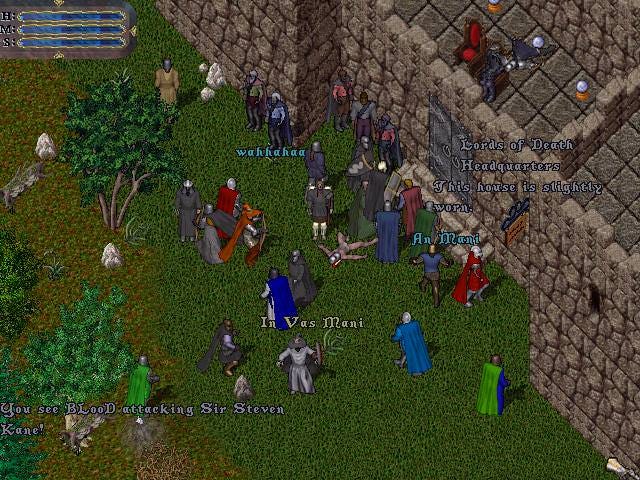
Ultima Online has in some ways backed itself into a corner. This housing is an ultimate goal for many players, a way to leave their mark on the virtual world. A player’s home is, in many cases literally, their castle. For most players, no amount of virtual money or items will be sufficient compensation for the loss of something that symbolises over two decades of memories and hard work. So, the player base remains dispersed and thus, diluted.
That’s not to say that Ultima Online is a “dead game”, far from it. While shards are often quiet, it is a surprisingly active community that engages in forums, Discord and in-game. Atlantic is probably the most populated shard, but Great Lakes, Chesapeake and Catskills all host sizeable communities. And the great thing about playing a game designed for dial-up internet is that modern broadband connections mostly counteract any latency issues associated with connecting to a server on the other side of the world.
Private shards
Most MMOs have developed their own private server community, and Ultima Online is no exception. Private servers hold a somewhat contentious position in the MMO landscape. Generally, they tend to operate in a legal grey area, or sometimes in an entirely non-grey illegal area. In most cases they are a violation of software terms of use. Many players and developers criticise them for taking money and players away from the official servers — after all, if you could play for free on a private server, why pay for the official one?
The reality is far more complex than that, and something that is likely to become abundantly clear over the course of this series. In Ultima Online’s case, private shards fall into a few different categories. First of all, there are the servers that are trying to emulate the official servers. In UO’s case, these are exceedingly rare.
The majority of private shards fall into the second category — nostalgia for a certain era. Many private shards have chosen to emulate Ultima Online as it was circa 1997–2004, what many players consider the “golden era” under developer Origin Systems. It’s not surprising either, and one need only look to the success of World of Warcraft Classic to see that there is a real hunger for authentic “original” experiences.

Though I won’t name any specific private shards, I spent a great deal of time talking to players from these private shard communities. Many of them stated that they don’t play on the official shards because they have no interest in the current state of the game, while others played on both. The reality is that these sorts of private shard players probably wouldn’t be paying for a subscription either way; you can’t lose business if you never had it.
The last category of private shard is the type that takes the game in a new direction. Several private shards have done this, and one recently launched private shard has proven extremely popular. The world map, skill system, quest system, player vs. player mechanics, literally every detail imaginable other than the graphics has been reworked or remade to provide a new experience. In the words of one player:
"It’s revived my interest in the game. Everything feels fresh and new."
The other consideration is that private servers are run exclusively by enthusiasts investing their own money in supporting and maintaining a server capable of hosting hundreds of players. Inevitably, many of these private shards collapse or face technical issues. Some have endured, but they are in the minority. What you save in subscription fees, you ultimately sacrifice in reliability. As they say, you get what you pay for.
That isn’t meant to disparage private shards — many of them are very well supported and operated, and have been key to perpetuating the UO legacy. Rather than hurting Ultima Online, private shards have played an important role in keeping the game alive and relevant.
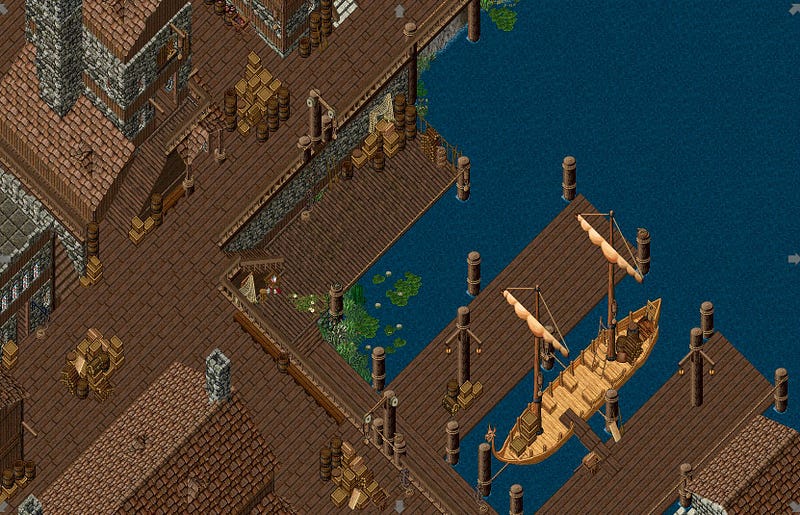
Ultima Online’s influence
There is no doubt that Ultima Online had an enormous influence on the MMO genre. It was one of the first big success stories in the genre, and for many years, other MMOs tried to emulate what Ultima Online was doing. It wasn’t until late in the first generation and early second generation of MMOs that developers started to really experiment with new approaches to MMO mechanics, before World of Warcraft reshaped the landscape and set the course for the genre’s history since.
Outside of the MMO genre, Ultima Online tends to be overlooked, but that shouldn’t be the case. In some ways, Ultima Online was a precursor to the survival/crafting genre. So much of the gameplay revolves around the manual collection of resources from the wilderness in order to build items and housing. And surviving player vs. player combat while doing it is all part of the experience. The resemblance to some modern titles like Conan Exiles and Valheim is uncanny.
Ultima Online also demonstrated that player-driven economies are possible, and the lessons learned in UO are what made the economies of later MMOs like EVE Online thrive.

Should you play Ultima Online today?
In most cases with this series, the answer to this question will be “yes”. Most developers have embraced the free-to-play model in some form, so there really is no reason not to give the games a go. That will, of course, come with some caveats.
Ultima Online is a game from another era. There are no quest givers with exclamation marks over their head. There is often no tutorial (or a poor one at best). There is no “goal”, so to speak. Ultima Online provides players with a wide open world of boundless freedom, hands you a few basic tools and says, “go”. The experience is very much driven by the player’s own motivations.
Ten years ago, I might not have recommended Ultima Online. But in today’s industry, where freeform games like Valheim thrive, I’d wager that Ultima Online could appeal to many modern gamers. Broadsword also have faith in the future of their game, recently announcing the first new UO shard in decades — introducing a new game type inspired by the “seasonal” releases of other online games.
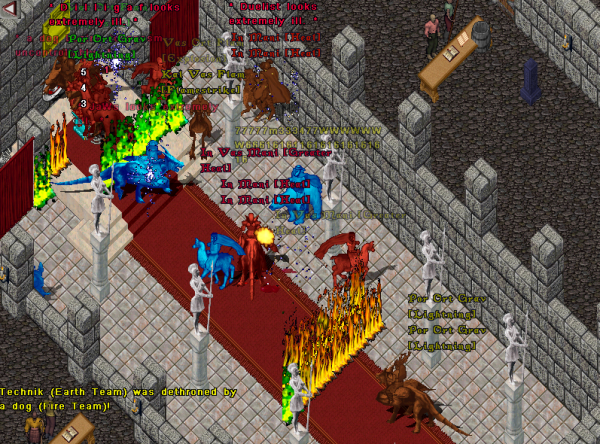
The future of Ultima Online
Ultima Online is irrefutable evidence of the points made in Ancient Worlds Part 1 — MMOs are unique among game genres because they are so resilient. There are exceedingly few games in existence that could boast an active community almost 25 years after release. These games endure — partially due to players refusing to abandon their sunken cost — but the importance of a strong community can’t be ignored. Online games provide an escape from a world that, particularly over the last two years, has been challenging for many; for those struggling in lockdowns, they might have provided exactly type of social interaction that a person needed.
In Ancient Worlds Part 3, I’ll be revisiting another enormously influential first generation MMO, a game often credited for being the “first” 3D MMO — Meridian 59.